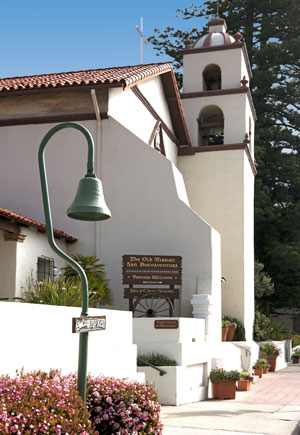National Register of Historic Places in Ventura County
Mission San Buenaventura
211 East Main Street
Ventura
Founded 1782
Mission San Buenaventura was the ninth of the twenty-one missions founded in Alta California by the Franciscan Fathers. The historic district includes the existing mission, the settling tank, the holding reservoir and a portion of the aqueduct, and the foundations of numerous Mission Period outbuildings.
Building activities extended from the founding of the Mission in 1782 until secularization of the California missions by the Mexican government in 1836. The church retained the grounds immediately around the mission buildings. The remaining, secularized property became known as Rancho Ex-Mission San Buenaventura.
In 1846, California Governor Pío Pico granted the Rancho Ex-Mission San Buenaventura to José de Arnaz.
In 1862, President Lincoln deeded a portion of the original property around the church to the Roman Catholic Diocese.
In 1874, the United States Government granted Rancho Ex-Mission San Buenaventura to Manuel Antonio Rodriguez de Poli.
Source: Adapted from Wikipedia the NRHP nomination submitted in 1975.

Mission San Buenaventura is also California Historical Landmark 310.

In the early 1900s, the El Camino Real Association installed about 450 bells along El Camino Real, the seven hundred mile road from San Diego to Sonoma which linked the twenty-one missions in Alta California.
By 1974, theft and vandalism had caused the number to dwindle to about seventy. The California Legislature appointed Caltrans as guardian of the bells. Replacements are made of concrete, rather than cast iron, to discourage theft.
In 2000, Caltrans applied for and received a federal grant which allowed Caltrans to install bells every one to two miles along El Camino Real from San Francisco through Orange County. (San Diego County was not included in the grant as El Camino Real is not on the state highway system within the county.)
The bells, manufactured by California Bell, were cast from a mold made from one of the original bells installed before 1910. These bells are an exact copy of the original bells, unlike the concrete replacements installed earlier. The installation, which was completed in June 2006 added 555 bells.
